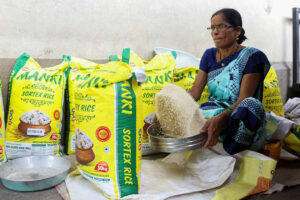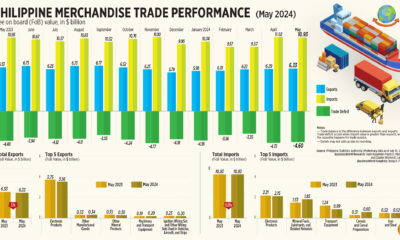Business
PHL is likely to be the ‘big winner’ once India eases rice export restrictions

THE PHILIPPINES would benefit most from an expected fall in global rice prices once India eases restrictions on rice exports, Nomura Global Markets Research said.
“We expect the Philippines to be the biggest gainer in Asia given rice’s high share of the consumer price index (CPI), dependence on rice imports and recent reductions in rice import tariffs,” it said in a report.
“The Philippines is likely to benefit most from falling international rice prices, through positive terms of trade effects and easing domestic food price inflation.”
Market participants expect India, the world’s largest exporter of milled rice, to soon ease restrictions on rice exports. Last year, India suspended exports of non-basmati milled rice due to concerns about domestic supply.
“With India accounting for 35% of global rice exports in 2022, making the country the world’s largest rice exporter, the export restrictions have pushed up global rice prices and hurt rice-importing countries worldwide,” Nomura said.
“In our view, India is likely to gradually lift restrictions on its rice exports in the coming months,” it added.
Nomura said it sees “brighter” prospects for the Philippines, which relies heavily on imported rice.
“Net rice imports accounted for 0.4% of gross domestic product (GDP) in 2023, the highest in Asia. As such, lower global rice prices should have the most favorable impact on the Philippines, followed by Indonesia,” the report said.
The United States Department of Agriculture (USDA) expects Philippine rice imports to reach 4.6 million metric tons (MMT) this year, higher than the Department of Agriculture’s forecast of 3.9 million metric tons (MMT).
As of June 27, the Philippines had imported 2.31 million tons of rice, the latest data from the Bureau of Plant Industry showed.
“Without price controls or subsidies, the pass-through to domestic rice prices is also significant and rapid, adding more downward pressure on headline inflation, which will already be affected by the government’s announcement of a substantial cut in rice import tariffs.” Nomura said.
President Ferdinand R. Marcos Jr. signed Executive Order No. 62 last month, lowering tariffs on rice imports from 35% to 15% through 2028.
The measure is expected to reduce retail rice prices by P6 to P7 per kilo, the Agriculture Ministry said earlier.
Nomura noted that the weight of rice in the Philippines’ CPI basket is 8.9%, which is “much higher” than that of neighboring countries.
In June, rice inflation fell to 22.5% from 23% a month ago. This was the third month in a row with slower rice inflation.
Rice accounted for 45.2% of total inflation, equivalent to 1.7 percentage points.
“Easing inflation would further support our view that BSP will begin its easing cycle in October, although the risk of an earlier first rate cut (i.e. in August) increases given Governor Remolona’s recent comments that BSP does not need to waiting for the Fed,” Nomura added.
Roehlano M. Briones, a senior research fellow at the Philippine Institute for Development Studies, said rice prices could fall further if India eases its restrictions.
“The rice tariff reduction is expected to reduce the price by about P7. (Prices may go lower if India lifts restrictions),” he said in a Viber message.
The latest data from the Department of Agriculture shows that the average price of well-milled rice ranged from P48-55 per kilogram as of July 10, while that of regular milled rice was P45-52.
“There could be a further decline in import prices, but exporters to the Philippines could also adjust their prices upward knowing that we have lowered our tariffs,” said Raul Q. Montemayor, national manager of the Federation of Free Farmers, in a Viber message. .
“It remains to be seen whether retail prices for rice will fall, which will benefit consumers,” he added.
Mr Montemayor said that based on his calculations, the margin between import and retail prices narrows as import prices rise.
“Once import prices fall in combination with the reduced tariff, market intermediaries may be able to recoup the margins they have lost and not pass on any benefit to consumers.” — Luisa Maria Jacinta C. Jocson













